As Trail Use Spikes, Communities Seek Solutions for Safe Use This Winter
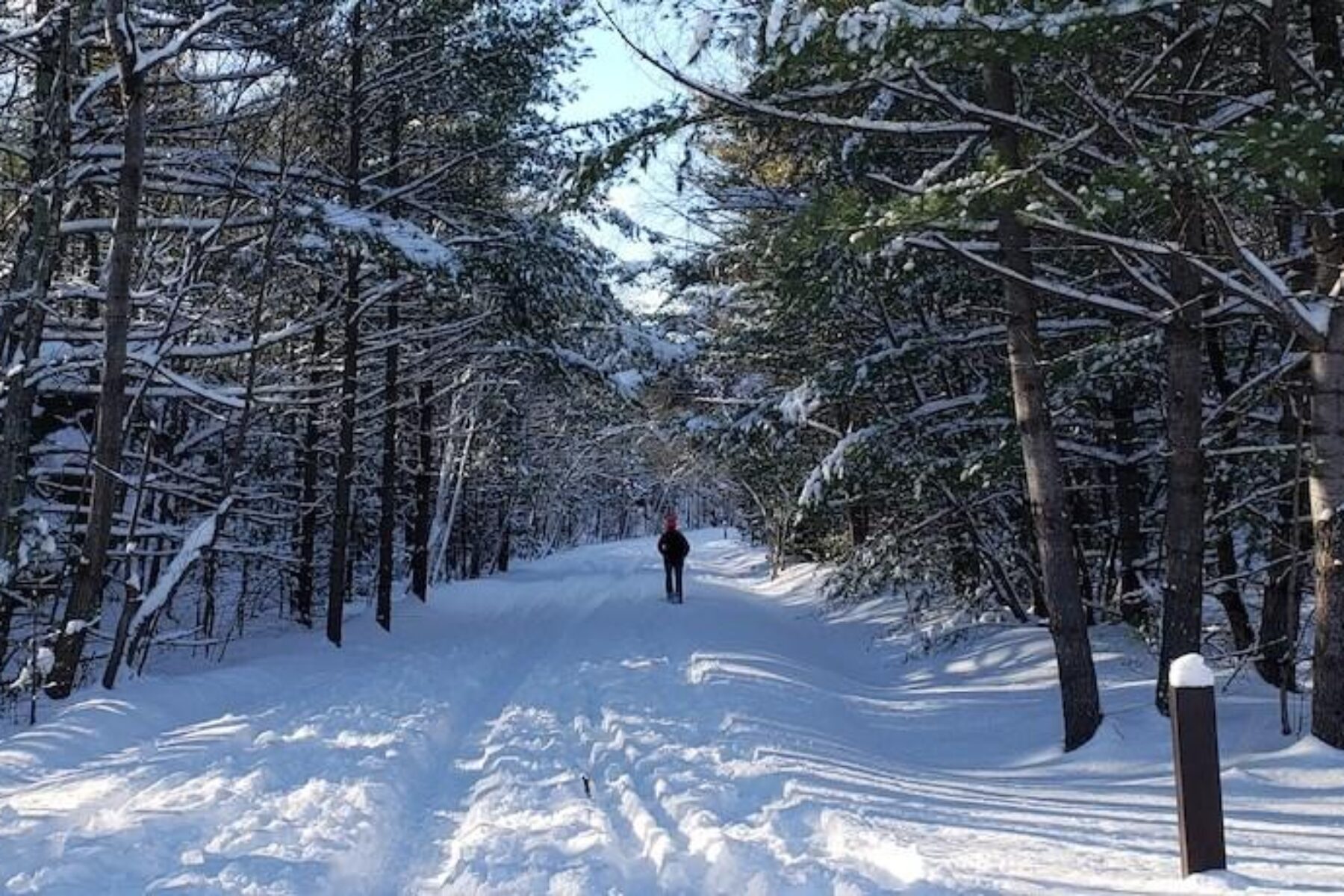
The first few months of 2020 were supposed to be a time for the volunteer stewards of the new Ashokan Rail-Trail (ART) in New York’s mid-Hudson Valley to take a breather and gear up for the trail’s first spring. Nine of the ART’s 11.5 crushed limestone miles and one of its three trailheads opened in October 2019 along the vast Ashokan Reservoir, and the remaining miles and trailheads opened in late December. All told, the ART drew about 25,000 users during the final 1.5 months of 2019, said Kevin Smith, chair of the ART-supporting Woodstock Land Conservancy. The general consensus among volunteers was that plenty of people would brave frigid temps and unplowed miles to get glimpses of the Catskill Mountains from the trail’s newly accessible western edge in early 2020, but most would wait until after Easter once it was a few degrees warmer.
That guess, of course, was made before COVID-19 began its spread.
“The pandemic, as you know, hit New York early, and really hard,” Smith said. “We were on a full shutdown for, boy, two, two-and-a-half months? A long time.”
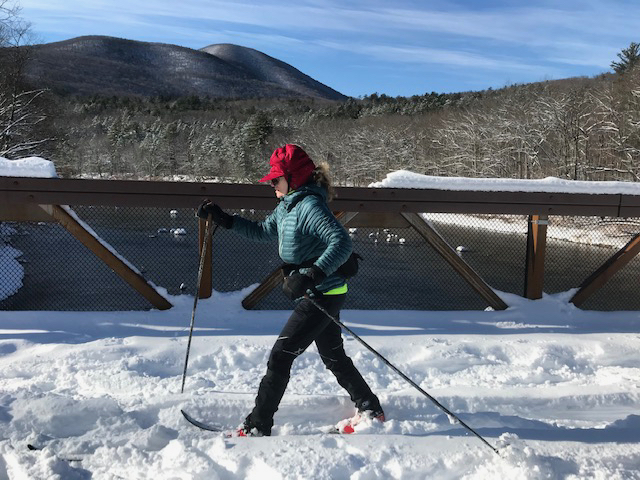
So instead of a pre-Easter lull, the ART became a destination during the final weeks of winter 2020 and the first weeks of the pandemic, “a much-needed outlet for our community to enjoy the incredible beauty of our area and restore our spirits during this difficult time,” as a steward wrote on the ART’s Facebook page on March 19, 2020.
With some early COVID-era winter experience to go on, Smith said the ART team knew that this winter would not slow down traffic on the trail. That’s a trend that trail managers and association members are experiencing in many cold weather regions this winter, and one that they’ve embraced with targeted safety and etiquette messaging for the newcomers and tried-and-true efforts to keep shared-use trails welcoming to a wide variety of users in winter months.
Geared Up for the Season
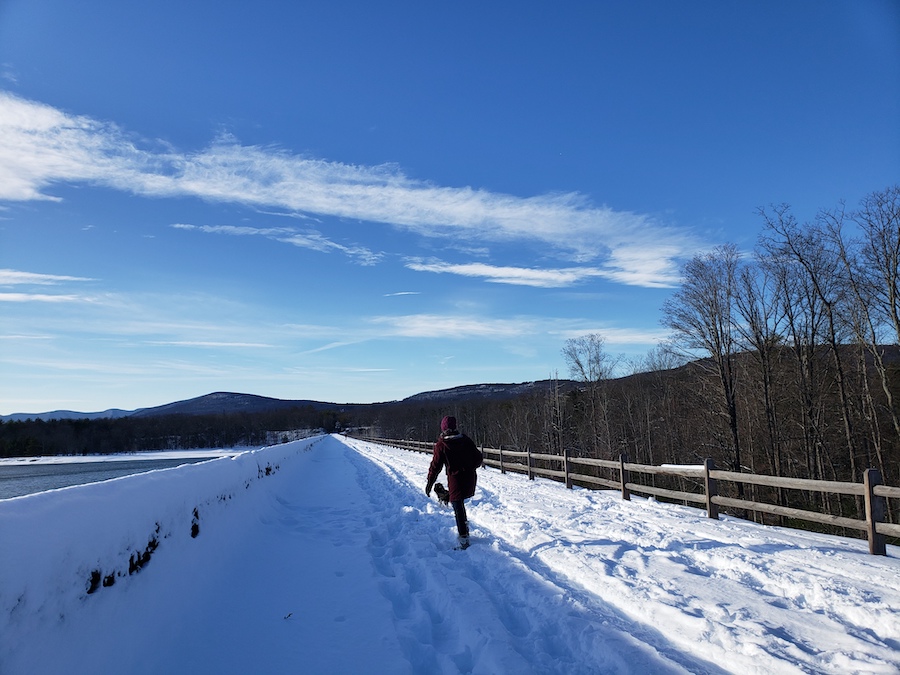
There are two types of trail users who figure to be newly or more frequently drawn to the country’s trails this winter, in addition those who have frequented trails for a long time, said Tom Sexton, Rails-to-Trails Conservancy’s northeast regional director. There are the people who will bundle up to spend about a half-hour enjoying a leisurely walk to fight off cabin fever and stretch their legs. And then there are the people looking to utilize trails to exercise in ways that, before COVID-19, they’d have done indoors or in group settings. As happened with bikes, kayaks and the like early in the pandemic, those activity-seekers created a run on winter outdoor athletic supplies.
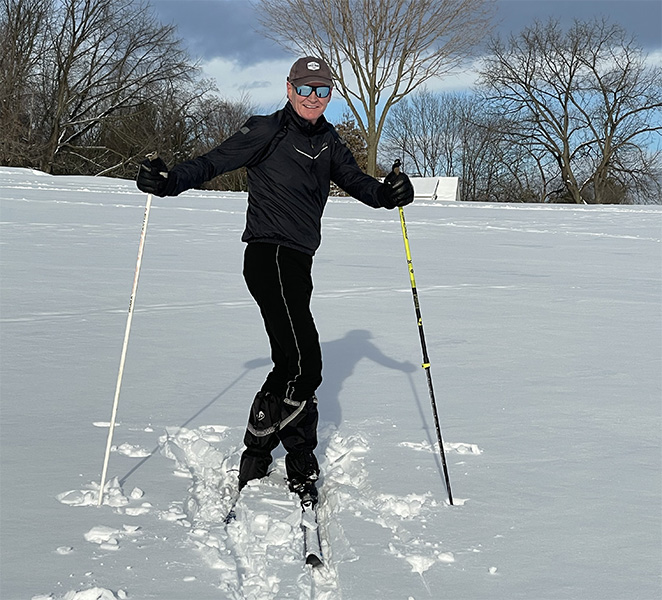
According to the consumer trend-tracking NPD Group, sales of backcountry-related gear—think snowshoes, walking poles, Nordic and alpine touring equipment, and even avalanche shovels— climbed by a combined 76% during the first months of the retail 2020 snow season (August–October) compared to the prior year.
“Consumers will continue to be active and seek another set of outdoor activities as temperatures drop and we move through the winter months,” Matt Powell, the NPD Group’s sports industry advisor, said in a mid-December news release.
In particular, purchases of new snowshoes skyrocketed in 2020, with sales growing by 254% compared to the 2019 August-October sales period. (During the early 2019 snow season months, snowshoe purchases increased by 1% from 2018.) The sport has been featured in trend pieces in the New York Times and New York Magazine and in an essay in the Washington Post. Stories highlighting rental demand and availability have been published in Cedar Rapids, Iowa, the Twin Cities region, New England and elsewhere in the past month. Sexton said that snowshoeing makes sense for people who are taking their first, or first in a while, steps toward being active outdoors during the winter months “because you can go in the woods and on other types of trails, and you don’t have to have the technical ability of a cross-country skier.”
But it’d be nice if you didn’t step in the ski lanes, he said.
Preaching Winter Trails Etiquette and Providing New Gear Know-How, From a Distance
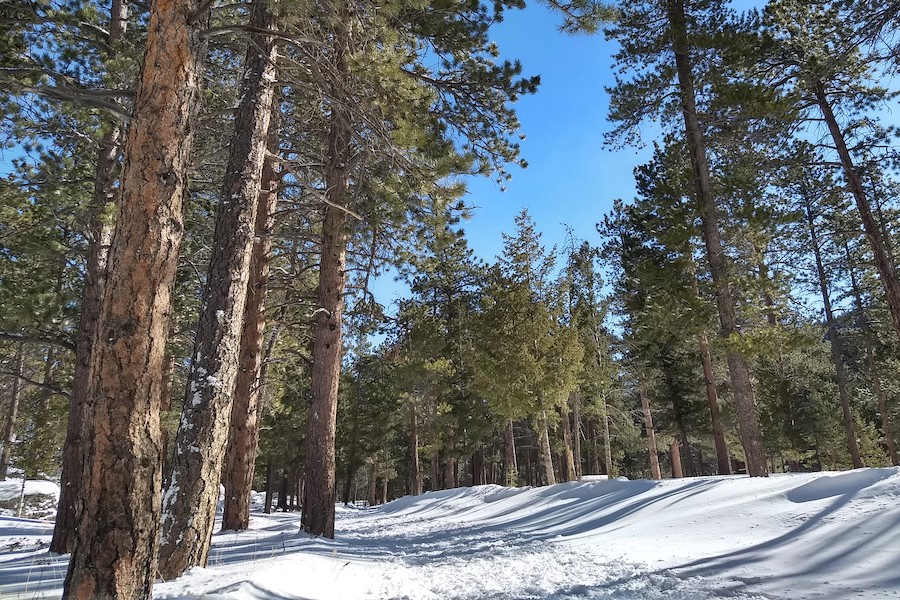
There is an art to sharing a shared-use trail in the winter, and like the ART stewards did with those first social media posts at the outset of the pandemic, many trail managers and association members have encouraged safe, responsible winter trail activity from afar.
Normally, facilities managed by the Wisconsin Department of Natural Resources would be providing in-person classes to teach newcomers the basics of snow sports, said Brigit Brown, section chief for recreation management.
“We haven’t been able to do the kinds of traditional programming that we have in the past, whether it be learn-to activities or candlelight skis or moonlight bike rides or those kinds of things,” Brown said. “We’ve been looking for other ways—putting out information about basic trail safety and etiquette so folks are able to enjoy [the outdoors].”
Examples can be found across Wisconsin DNR’s media presence. On its Facebook page, you’ll find tips on teaching children how to cross-country ski. On its Instagram page, you’ll find safety tips for snowmobiling responsibly across the state’s 25,000+ miles of groomed trails. On the Wisconsin DNR website, an OutWiGo winter campaign page includes a searchable database of trails, parks and other facilities by activity, as well as a winter activity bingo card. (Getting a state parks pass is the free space.) And a recent episode of Wisconsin DNR’s “Wild Wisconsin: Off the Record” podcast highlighted two friends who recently created an all-women snowmobile club, the Wisconsin Sled Divas.
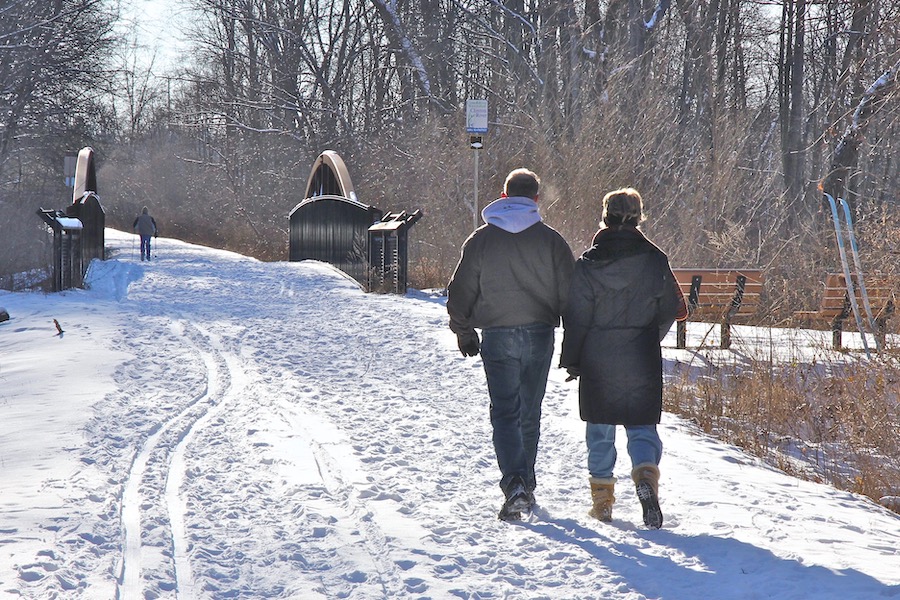
Similar informational campaigns are happening at local levels too.
“The snowshoes, they kind of help you float on the snow instead of sink,” Luke Ewald explains in a video for novice snowshoers shared on the Friends of Jackson, Minnesota, County Trails Committee YouTube page.
A member of the trail committee and the public health educator of Des Moines Valley Health and Human Services, Ewald started making instructional videos last year to inspire residents of southwest Minnesota’s first Bicycle Friendly Community to get outside and properly use bike lanes, safely explore the surrounding trail system and try new activities like fat tire biking and snowshoeing.
“I’ll be honest, I’m not going to win an Oscar for my acting performance,” he said. “We’re going to try to get others to join instead of just me. And we’re going to continue doing these videos moving forward—and we might even expand it to other communities as well.”
At a time when trail usage has soared—Ewald counted 1,137 users this year compared to 201 over similar manual count periods in 2019—he and other members of the tri-county Cottonwood-Jackson-Nobles Community Wellness Partners program are encouraging people to keep it up through the winter. Along with the videos, the campaign has included monthly submissions to the local newspaper highlighting trail etiquette tips and social distancing strategies, as well as policy change. The city is now plowing some sidewalks and trails in an effort to encourage winter season recreation and transportation, which Ewald applauded.
“When you come here during the wintertime, you’ll see footprints where the trails are,” he said. “Folks use the trails.”
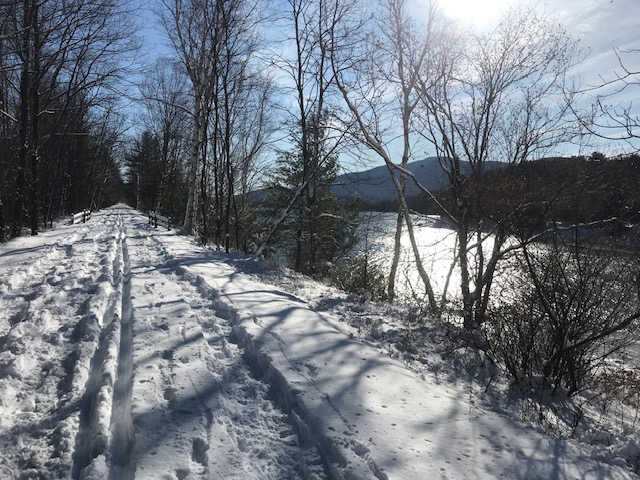
The Ashokan Rail Trail isn’t groomed, but Smith said people are using it all the same no matter the weather. Early on during the pandemic, as people left cities and headed to (or bought) second homes and long-term rentals, Smith said that he and other trail stewards put on masks, packed extra sanitizer and made frequent visits to the ART to encourage users to use it safely.
“We had a core group of (volunteers) who kept going out through the shutdown, and God bless them all,” Smith said. “It was just extraordinary how much value [was felt], how grateful people were for the trail and how much it meant to them.”
These days on the ART’s Facebook page, stewards regularly post trail condition updates, safety recommendations and etiquette tips alike. Messages recommending microspikes or hiking poles are posted on icy mornings. As a snowfall in late January neared, a steward asked the ART’s skiers to set up their tracks on the trail’s far right side in each direction.
“If you are passing folks, let them know,” a steward wrote on a similar post in mid-December. “And please do continue to practice social distancing from folks you are not with. This may require us to go a little slower when passing. Have a fantastic time out there, post storm. Stay safe.”
Winter Trails Bring All Types Together, After They’re Groomed
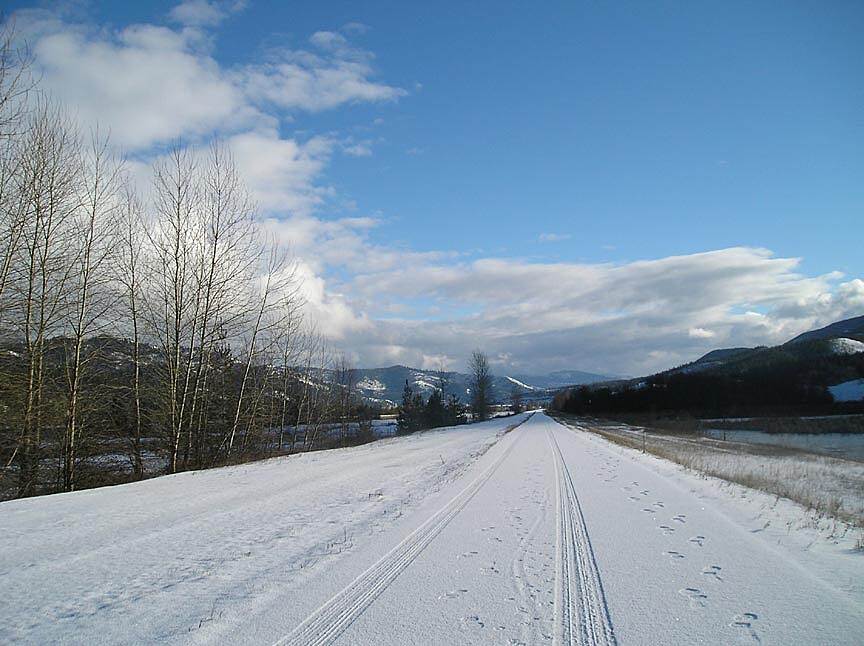
While the nonmotorized-use Ashokan Rail Trail isn’t groomed now, Smith said there have been conversations about doing it in the future. But a trail groomer is costly, needs year-round storage space and requires someone who will reliably take it out onto the trails at very odd post-snowstorm hours.
“I will be honest, snow grooming is an art,” Brown, in Wisconsin, said. “There are so many different factors that go into determining when grooming should take place. It’s pretty amazing. The folks that are good at it … it can be the middle of the night and the conditions are such that that’s when [they] need to groom. A lot of it has to do with the temperatures, and the condition of the snow itself and how much of a base there is.”
In many cold-weather communities where trails are open to motorized use in the winter, volunteers affiliated with local snowmobile clubs head out with the groomers soon after a heavy snowfall. That process is dictated more by snowfall than COVID-19-induced traffic, though Sexton said that in Vermont, for one, trail managers are encouraging people to use rail-trails instead of hiking trails during the upcoming March-April “mud season,” because overuse left the less stable trails in need of repair.
Without the maintenance provided by the Vermont Association of Snow Travelers, the state’s Lamoille Valley Rail Trail wouldn’t be passable for snowmobilers or trail users alike, said former LVRT Committee Chair Laird McDowell.
“The one in my town is called the Smugglers Notch Snowmobile Club,” he said. “They have a machine, a pretty fancy groomer, much like the ski resorts have, to groom the trail. We get a foot of snow, and they’ll be out here with a groomer to pack the trail down. It looks just like a ski resort.”
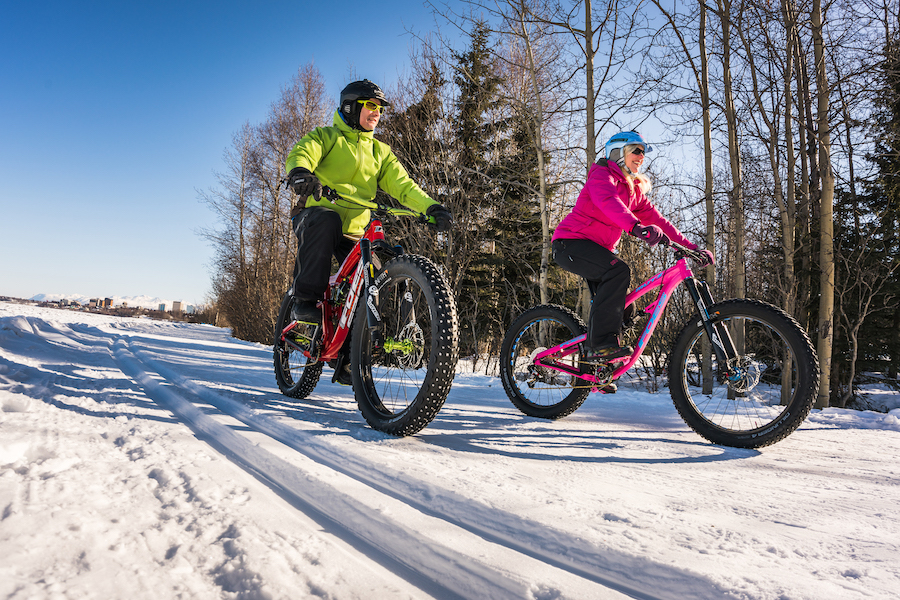
“Primarily, that’s for the snowmobilers to use. But it is a shared-use trail with cross-country skiers and snowshoers and fat tire bikers as well.”
While it might give pause to trail users not accustomed to sharing the path with motorized vehicles, McDowell said the interactions between nonmotorized users like him and snowmobile riders are non-events.
“The practice is for the snowmobilers to slow down and for skiers or snowshoers to step aside and let them through. That’s been going on for years, and I haven’t heard any complaints.”
Nor has Rick Shaffer, the self-appointed Prime Minister of Wallace, Idaho, and president of the Friends of the Coeur d’Alene Trails association.
“We hear these gloomy stories of snowmobilers running cross-country skiers off the track and scaring them, and the cross-country skiers throwing their poles at people,” he said. It doesn’t happen up here.
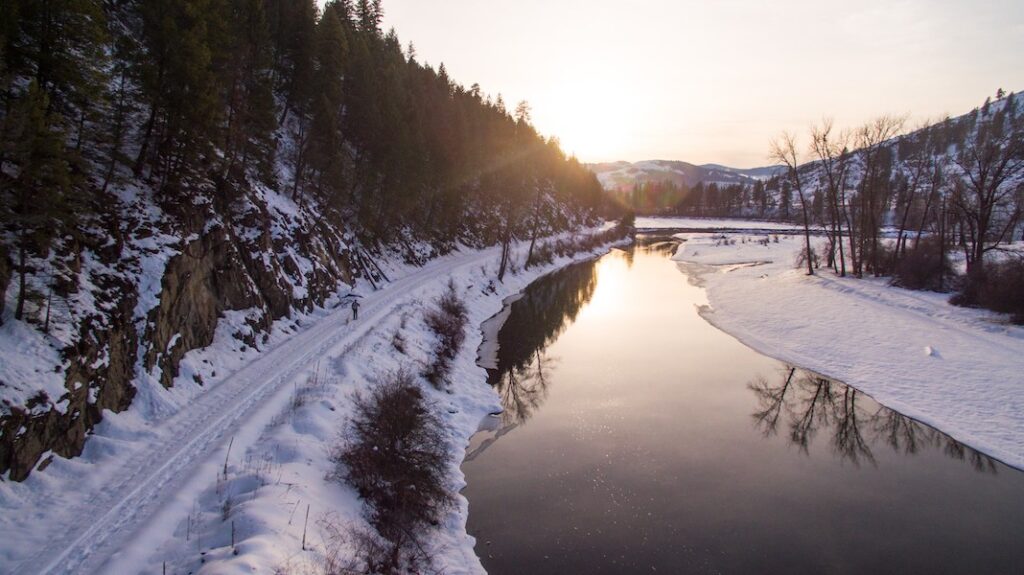
“When I’m on trail and I’m crossing or snowshoeing, I’ve got my Great American Lab with me. I just pull over to the side. She sits and I take my glove off and try to give a signal of how many of us there are. They also do the same. If there’s 10 coming, they’ll tell me. Occasionally, they’ll stop and ask how the snow is or I’ll flag them down if they’re coming from where I’m going, doing some backcountry stuff. It’s really amicable.”
When he sees groups of them on the Northern Pacific Trail, more than anything, he said, it makes him happy. During COVID-19, snowmobilers and other trail users from Washington, Montana and elsewhere have been among those booking last-minute weekend trips to the area.
“People are coming to visit because we are a recreation destination,” he said. “With COVID, people are wanting to get outside and feel safe about it, and they’re coming like crazy.”
RELATED WINTER BLOGS:
- How to Adapt Trail Activities and Gear for Cold and Winter Conditions
- Winter “Share the Trail” Etiquette and Safety Tips
- Seven Hot Tips for Cold-Weather Biking
- Rail-Trail Tips for Cross-Country Skiing (A 101 Guide)
- The Magical World of Snowshoeing: A How-To Guide for Trails)

Donate
Everyone deserves access to safe ways to walk, bike, and be active outdoors.
